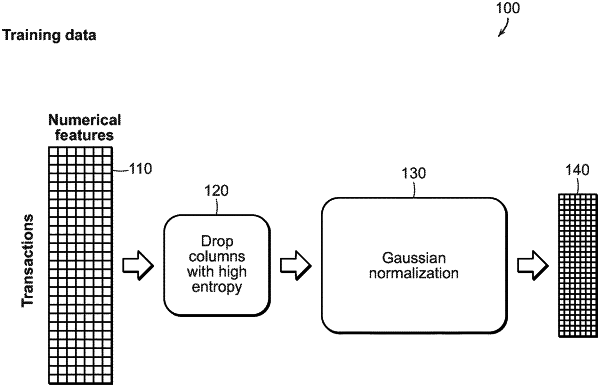| CPC G06F 16/2365 (2019.01) [G06F 16/285 (2019.01); G06N 3/04 (2013.01); G06N 3/08 (2013.01); G06Q 10/10 (2013.01); G06Q 30/0185 (2013.01)] | 19 Claims |

|
1. A method for detection and classification of data, the method comprising:
converting a set of data values comprising a multi-field record into a first graph representation of the multi-field record, with the first graph representation comprising nodes and edges, wherein converting the set of data values representative of the multi-field record comprises, for each of the data values comprising the multi-field record, transforming that data value from a 1-dimensional space into a respective multi-dimensional vector of a plurality of multi-dimensional vectors, wherein transforming that data value comprises using a corresponding trained multi-layer perceptron of a plurality of multi-layer perceptrons used to transform data values of the multi-field record, wherein each multi-dimensional vector of the plurality of multi-dimensional vectors corresponds to a respective one of the nodes of the first graph representation representing both feature information for respective data values of the multi-field record and a relationship of the respective one of the nodes to other of the nodes in the first graph representation;
applying a machine learning graph convolution process to the first graph representation of the multi-field record to generate a transformed graph representation for the multi-field record comprising a resultant transformed configuration of resultant transformed nodes and edges that organizes the resultant transformed nodes and edges according to relevance or a normality of the nodes and edges of the first graph representation of the multi-field record; and
determining, based on the resultant transformed configuration of the resultant transformed nodes and edges, a probability that the multi-field record is anomalous.
|